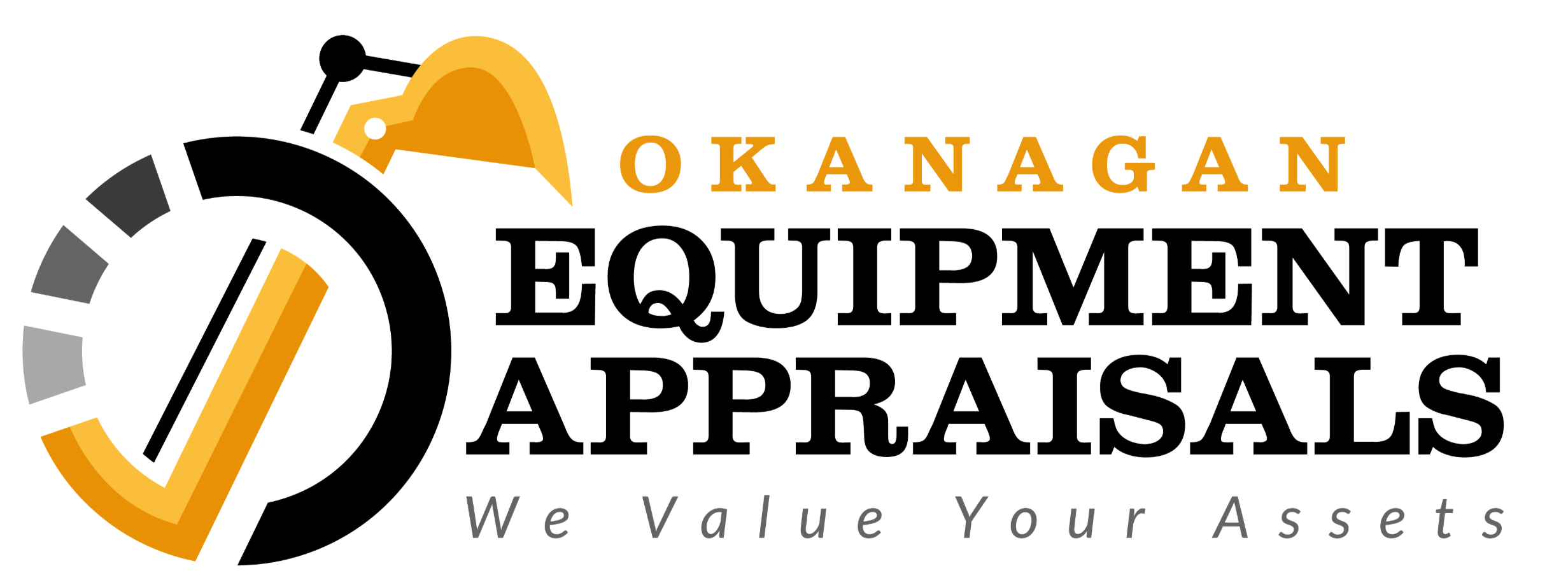Equipment Appraisal Process Breakdown: From Confusion to Clarity
- OEA Staff

- May 23, 2024
- 3 min read
Updated: Jul 16, 2024

At Okanagan Equipment Appraisals, we live and breathe machinery and equipment appraisals. We understand that for many business owners, the prospect of undergoing an equipment appraisal can be daunting.
Never fear!! We’re here to demystify the process and guide you through each step (by step), to ensure a smooth, insightful experience.
Let's Start Here...
When it comes to running a successful business, understanding the value of your equipment is paramount. Equipment appraisal provides clarity on the worth of your assets, aiding in decision-making processes, financial transactions, and insurance coverage. In this article, we'll delve into the intricacies of the equipment appraisal process breakdown, breaking it down into manageable steps for business owners who may be new to our world.
II. Understanding Equipment Appraisal
Before delving into the appraisal process, it's essential to grasp the significance of equipment appraisal. Simply put, equipment appraisal involves determining the value of machinery, tools, and other tangible assets owned by a business. This valuation can be crucial for various purposes, including obtaining loans, assessing insurance coverage, and facilitating mergers or acquisitions.
III. Preparation for the Appraisal Process
Before the appraiser arrives, there are several steps you can take to streamline the process. A great place to start is with meticulously organized maintenance records and purchase invoices. These speed up the documentation review process.
Next, accessibility to the equipment is equally important. Clear pathways and access points enable the appraiser to conduct a thorough inspection without delays. Additionally, identifying key personnel who can provide insights into equipment history and usage can enhance the accuracy of the appraisal.
IV. Step-by-Step Breakdown of the Appraisal Process
The equipment appraisal process breakdown typically comprises several distinct phases, each serving a specific purpose. During the initial consultation, we discuss your appraisal needs and objectives, reviewing relevant documentation to gain insights into the equipment's history and condition.
A crucial aspect of the process is the physical inspection of the equipment. This involves assessing its condition, identifying any unique features or customizations, and documenting relevant details. For instance, during a recent appraisal, we encountered a piece of specialized machinery that had undergone extensive modifications to enhance efficiency. Documenting these modifications was essential for accurately assessing the equipment's value.
Following the inspection, extensive research and analysis are conducted to determine the fair market value or replacement cost of the equipment. This entails comparing similar assets in the market, considering factors such as age, condition, and technological advancements. The resulting report provides a comprehensive overview of the equipment's value, supported by data-driven analysis and expertise.
Presenting the appraisal report to the client is the final stage of the process. This step allows for a thorough review of the findings, addressing any questions or concerns the client may have. Transparency and clarity are paramount, ensuring that the client fully understands the basis for the appraisal valuation.
V. Factors That Impact Equipment Appraisals
Several factors can influence the value of equipment, ranging from its age and condition to market demand and industry trends. Technological advancements and regulatory changes also play a significant role in determining appraisal values. For example, in the automotive industry, the introduction of electric vehicles is expected to lead to shifts in the value of traditional combustion engine equipment.
VI. Benefits of a Professional Equipment Appraisal
Investing in a professional equipment appraisal offers numerous benefits for business owners. Beyond facilitating financial transactions and insurance claims, appraisals provide valuable insights for asset management and strategic decision-making. For instance, a detailed appraisal report can help identify opportunities for equipment upgrades or replacements, optimizing operational efficiency and profitability.
VII. Common Misconceptions About Equipment Appraisal
Despite its importance, equipment appraisal is often surrounded by misconceptions. One prevalent myth is that the appraised value equates to the selling price of the equipment. In reality, the appraisal value serves as a benchmark, providing guidance for negotiation purposes.
VIII. Selecting the Right Appraiser
Choosing the right appraiser is crucial for obtaining an accurate and reliable valuation of your equipment. Look for appraisers with relevant qualifications, experience, and industry specialization. Additionally, seek references and testimonials to gauge the appraiser's reputation and track record.
IX. Wrapping Up
An equipment appraisal doesn't have to be a daunting process. By understanding the steps involved and working with a qualified appraiser, business owners can gain valuable insights into the value of their equipment, empowering them to make informed decisions and navigate financial transactions with confidence. Should you require further assistance or have any questions, feel free to reach out to our team!



